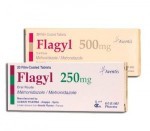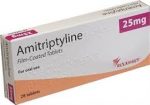Anafranil is a drug of antidepressant action, which has a sedative and mild analgesic effect.
Indications
Depressive neurotic condition of involutional, endogenous, reactive, organic nature;
Depressive syndrome, which developed on the background of schizophrenia;
Personality disorder;
Depressive states, provoked by prolonged pain;
Panic attacks of fear.
Anafranil is effective for chronic pain syndrome in cancer patients, patients suffering from migraines, rheumatism, postherpetic neuralgia, peripheral neuropathy, narcolepsy, and catalepsy.
Often, the drug is used to prevent migraines and relieving of headaches.
Contraindications
- Myocardial;
- Poisoning by alcohol and drugs;
- Angle-closure glaucoma;
- Severe conduction defects;
- Age up to 12 years;
- Pregnancy and lactation;
- Hypersensitivity to the components of drug.
With care Anafranil is prescribed under the following conditions:
- Chronic alcoholism;
- Bronchial asthma;
- Manic-depressive psychosis, schizophrenia, epilepsy;
- Inhibition of hematopoietic function of bone marrow;
- Angina pectoris, chronic heart failure, hypertension, arrhythmia, heart block, stroke;
- Violations of the gastrointestinal tract motility, renal and hepatic insufficiency, hyperthyroidism, urinary retention, prostatic hyperplasia;
- Elderly age.
Method of administration and dosage
The drug is taken by mouth, after eating or during it, either intramuscularly or intravenously. For the treatment of phobias, depression, obsessive-compulsive disorder you should take Anafranil orally 2-3 times a day to 25 mg. During the first week the daily dosage of medications is increased gradually to 100-150 mg. Once the condition improves, the patient is transferred to maintenance therapy – 50-100 mg per day.
Side effects
The use of Anafranil may cause such side effects as drowsiness, restlessness, anxiety, aggressiveness, worsening of memory and concentration, nightmares, psychosis, insomnia, tinnitus, hallucinations, irritability, malaise, lability. Furthermore, in some cases the drug is able to provoke tremor, blurred vision, tachycardia, dry mouth, constipation, sweating, arrhythmia, ataxia, collapse, hypotension, nausea and vomiting, hepatitis, heartburn.
Special instructions
Before treatment by Anafranil is necessary to eliminate hypokalemia. In case of the presence of hepatic disease during the drug therapy, you should monitor the activity of hepatic enzymes. Anafranil combination with benzodiazepines gives good effect. Thus during the treatment the dosage is gradually increased (depending on tolerance), and benzodiazepine is overturned. It is desirable that the treatment will be lasted for at least six months. During the treating by Anafranil you should avoid driving and control potentially dangerous machinery that require high concentration of attention. Cancellation of the drug should be gradually (in order to avoid adverse reactions).





